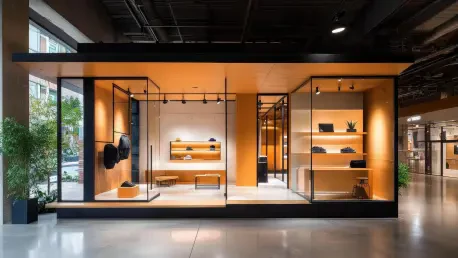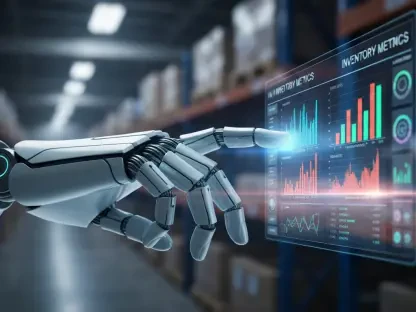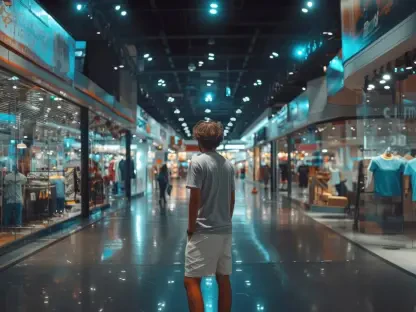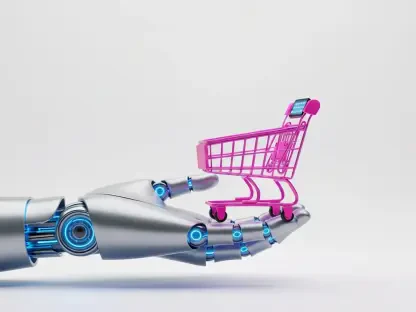In a world where digital interactions increasingly take center stage, the traditional brick-and-mortar store faces a decisive moment in its journey. Retail spaces that once existed solely for product transactions are now redefining themselves as arenas for immersive and sensory-rich experiences. This shift is emphasized during gatherings like Shoptalk Europe in Barcelona, a pinnacle event for leading retailers and innovators. Here, industry professionals delve into strategies to enhance in-store engagement, marrying technological advancements with evolving consumer expectations to redefine what physical stores represent in the retail landscape.
The Modern Consumer’s Desire for Immersive Environments
A Shift in Consumer Preferences
Today’s consumers are shifting away from purely transactional shopping in favor of experiences that capture their imagination. This trend is most evident in the growing popularity of engaging store environments that combine emotion, interaction, and storytelling. Research reveals that over half of connected consumers are drawn to such immersive experiences, highlighting a significant change in post-pandemic consumer expectations. In response, retailers are pivoting from being merely points of sale into destinations that encapsulate brand identity and storytelling to form deeper connections with shoppers. These efforts aim to transform physical spaces into engaging environments where customers can feel brand narratives unfold in real-time.
Innovative Retail Experiences Leading the Way
Retailers worldwide are taking inspiration from this trend, launching innovative store concepts that focus on experiential shopping. For instance, Rituals has reshaped its stores into sanctuaries of well-being, complete with in-store spas, offering more than just products but rather moments of relaxation and care. In a similar effort, Canada Goose has presented its “Cold Room” experience, a space allowing customers to test outerwear in temperature-controlled settings mimicking harsh climates. These examples underscore a wider movement within retail spaces, where the goal is to deliver memorable, multi-sensory experiences that resonate deeply with consumers. A significant number of industry professionals prioritize enhancing the customer journey as a top commerce objective, reflecting this burgeoning trend.
Integrating Technology for Seamless Shopping
Bridging Physical and Digital Realms
As technology continues to evolve, brick-and-mortar stores are leveraging digital innovations to bridge the gap between physical and online shopping. These stores are transitioning into data-driven hubs where inventory management and customer interaction are optimized. This creates an omnichannel experience that caters to modern consumer demands effortlessly. The integration of technology ensures that each customer’s journey is seamless, starting from product discovery to final purchase, enhancing the overall experience. This approach allows retailers to gain valuable insights into consumer behavior and adapt quickly to shifting preferences, helping them stay competitive.
Real-World Applications Driving Change
Incorporating smart technology into retail environments exemplifies this transformation effectively. H&M showcases this trend by employing RFID and sensor technology that offers customers an innovative shopping experience. This technology assists in efficient navigation, streamlined checkout processes, and real-time tracking of inventory, enhancing operational efficiency. In addition, by analyzing consumer behavior metrics such as foot traffic and purchase patterns, H&M tailors store layouts and inventory more effectively. Similarly, grocery leader Tesco highlights the integration of digital touchpoints, which supports personalization efforts across its thousands of stores. By implementing micro-fulfillment centers to handle online orders, Tesco minimizes disruption and refines its customer experience, reflecting a sophisticated approach to blending online and offline operations.
Crafting the Future of Retail Spaces
Looking Ahead with Strategic Vision
As physical retail spaces continue to evolve, the integration of technology and experiential concepts becomes pivotal in providing enhanced customer experiences. Brands and retailers find themselves at a strategic juncture where innovation is not merely optional but necessary for growth. Physical stores are poised to become central to omnichannel strategies, providing critical interactions that foster genuine connections with consumers. This evolving dynamic requires retailers to be agile and responsive to digital shopping trends, ensuring they meet the high expectations of a tech-savvy audience while delivering emotional and tactile experiences that digital platforms cannot rival.
The Path Forward for Unparalleled Customer Engagement
In an era dominated by digital engagement, the traditional brick-and-mortar store stands at a critical juncture in its evolution. Once purely transactional venues, these stores are transforming into hubs for immersive experiences that appeal to the senses. This evolution is spotlighted during major gatherings such as Shoptalk Europe in Barcelona, a leading event for top retailers and innovators. At these gatherings, industry experts explore strategies to boost in-store engagement, capitalizing on advancements in technology to meet shifting consumer demands and expectations. They address how physical stores can redefine themselves in the modern retail landscape. By incorporating cutting-edge technology and experiential elements, retailers aim to create spaces that entice customers and foster deeper connections. The objective is for these stores to serve not just as places of purchase but as locations for meaningful interactions, further blending the physical and digital worlds to enhance overall customer experience.









